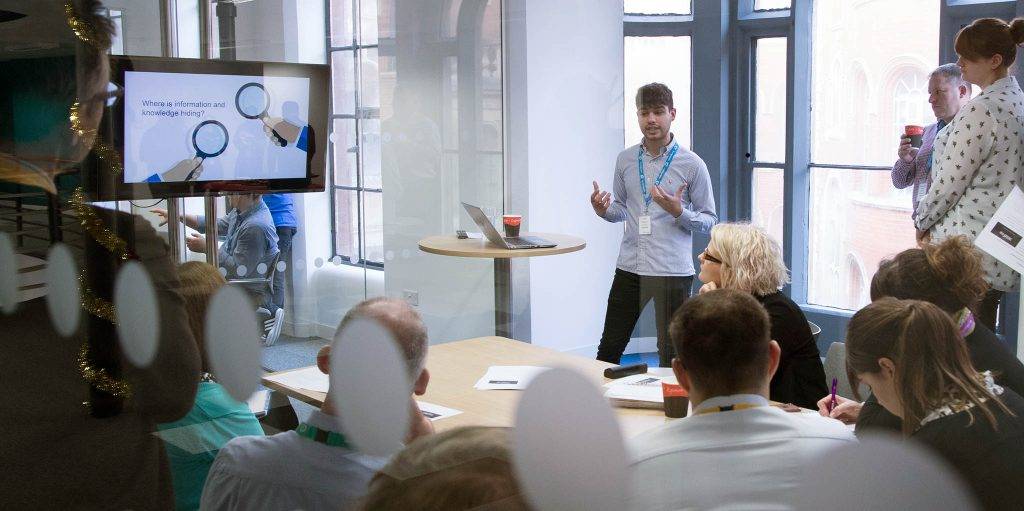One of the issues often reported around Massive Open Online Courses (OLXs) is the high ‘drop out’ rate associated with them.
All to often, the focus is on completion rates, i.e. ‘finishing’ the actual course. But as people development professionals, we know ‘completion’ is rarely the goal – Change is what we’re really trying to achieve!
Are we guilty of taking old-fashioned definitions of what ‘success’ looks like – such as finishing, passing, qualifying, graduating, or gaining a ‘tick-in-the-box’ – and applying that traditional perception to a very modern delivery method?
3 Sure-Fire Ways to Engage Your OLX Audience
For us, OLXs should be viewed as having a much greater alignment with using the internet to search for information, than of taking a formal course. But you need to get the balance right in order for your OLX to work for you and to keep your audience coming back for more and achieving that all-important behaviour change along the way.
As a company, we’ve designed, wrangled and facilitated hundreds of OLXs and have learned lots of lessons along the way. Of these lessons, three things stand out above everything else…
#1: Level-Up. Early!

“You can never level up enough early on in the game”
– Sid Meier
As a general rule, you’re looking to start off easy, letting the learner level up quickly without too much effort. This gets learners into the swing of things and allows them to make fast progress – thus increasing their confidence.
#2: Keep Videos Under 4 Minutes in Length

We recently performed a large scale analysis of our own OLXs to try and discover what was the right length of time for video content presented in the Learning Pool Platform. We classified video content into two broad categories: short content (less than 4 mins in length) and long content (8 mins or more).
Using data collected by our LRS (Learning Locker), we then performed an analysis to suggest how long users stayed on each object (dwell time).
What we saw was clear:
- When content is less than 4 mins in length, users tend to stay for over 9 minutes.
During this time they watch the video, read some comments, vote a bit and then add their own thoughts. - When the video is 8 mins or longer, the average dwell time is just 37 seconds.
That’s enough time to start the video, realise you aren’t going to finish watching it and quit out.
Our OLXs are voluntary and perhaps they attract a fickle learner as there is no big ‘end goal’. However, our findings are also backed up by evidence from EdX who also found that short videos are best for engagement, specifically 4 minutes or less.
In fact, we suspect even shorter would be better!
#3: Think in Thirds

When we design a OLX, we like to ‘Think In Thirds’, specifically in terms of content that is Internal, External, or Uploaded.
The Learning Pool platform is designed to let you source content from wherever you find it. By presenting a unified interface to content, your experience will seem more coherent and better structured, even if the content production itself is very different.
- Internal The first third of content tends to be linking to other systems/platforms owned by the business.
This can be an LMS, a document management system, an intranet page, the public-facing website etc. You will have internal Intellectual Property that can be re-used and by linking to it where it is already uploaded, you save on version control headaches. Your first priority should always to curate content from your organisation. - External The next third tends to come from the wider world.
Here you can expand to look at popular content sharing websites such as YouTube, TED, Wikipedia, blogs etc. There is a world of rich content on the Internet, just waiting for you to tap into it. Where possible, before making something new yourself, look to see if it can be sourced externally – and, hopefully, for free! - Uploaded The final third of content it is likely you will need to upload directly into your platform.
This might be because it has no other digital home, or because you need to create some new content to round out the experience. Either way, it tends to be that this content can be used to ‘glue’ the experience together; giving your learners some specific context or examples that might not be found elsewhere in the organisation or the wider world.
Our ‘thirds’ approach is obviously only a rough guide, but it tends to be accurate enough in most circumstances. The less you commit to building new, the quicker you will be able to get up and running. Remember, this is a social learning experience: content doesn’t have to be perfect. The real insights will be built in response to content, not merely as a result of watching something.
We recently shared some of our thoughts on this issue at a Charity Learning Consortium ‘Speed Geeking’ session – you can view our full slidedeck here.
Next Steps
So now you’ve got out top tips to keeping your OLX audience engaged and coming back for more, it’s time to put your new learning to the test.
Got an idea for a course already? If you’ve already got an idea for a course that you’d like to turn into a OLX, then get in touch – we’d love to hear from you.
Want to try a OLX? Alternatively, if you’re yet to experience a massive open online course yourself, there is no better way to find out if they might be right for you than by giving one a try – and we invite you to check out our free courses today.


